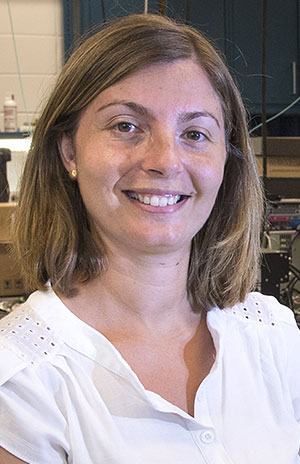Viviana Cavaliere
When did you join Brookhaven Lab, and how did you find your way here?
I started at Brookhaven in September 2017, but I was based at CERN (in Switzerland) for the first two years. I moved to Long Island at the end of 2019, so only a few months before the pandemic started. I’m still pretty new to the lab life. I knew the Brookhaven group because we have worked together on the ATLAS experiment at the Large Hadron Collider (LHC). I always thought it was a very nice group, diverse in the physics they do and very welcoming of new people, so I knew I wanted to apply here when I was starting to look for tenure-track positions.
What is your job at Brookhaven?
I’m a scientist in the Physics Department. I work on the ATLAS experiment at the LHC at CERN. In particular, I have been looking for new particles that could explain some of the remaining puzzles of the Standard Model theory, which tries to answer some basic questions about what the universe is made of. I’m also involved in research and development for future runs of the LHC, studying the identification of particles by analyzing the “hits” left in the detector using machine learning algorithms.
What inspires your work here?
I like that Brookhaven is a lab that does not focus on a single experiment or topic. You can easily get access to different kinds of expertise—from computer science experts to engineers—that can help solve your everyday problems.
What is your favorite story about your job?
My current supervisor, Michael Begel, was the first person I spoke to about my work in the ATLAS experiment over ten years ago. It’s amazing that among over 3,000 colleagues, I ended up working with him.
What future activity at the Lab are you most excited about?
Our group at Brookhaven is very involved in the upgrade of the ATLAS detector for the high-luminosity run of the LHC. In particular, we are redesigning the trigger (the online event selection system that allows us to throw away background events very quickly, selecting signal events) to deal with more challenging conditions. I’m very excited to complete this upgrade over the next few years, and then install and test it to see the results of the work we are doing now with real data!
